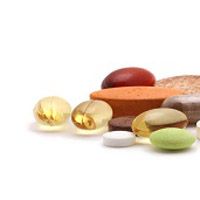Ergocalciferol vs. Cholecalciferol in Pediatric Cystic Fibrosis Patients with Vitamin D Deficiency
A new trial of vitamin D replacement regimens in young people with cystic fibrosis and exocrine pancreatic insufficiency finds twice-weekly doses of vitamin D2 50,000 IU to be as effective as weekly doses of vitamin D3 50,000 IU.

A new trial of vitamin D replacement regimens in young people with cystic fibrosis and exocrine pancreatic insufficiency finds twice-weekly doses of vitamin D2 50,000 IU to be as effective as weekly doses of vitamin D3 50,000 IU.
Vitamin D insufficiency is common in children with cystic fibrosis, particularly those who also suffer from pancreatic insufficiency, but very few studies have compared different strategies for supplementation.
Researchers from Boston Children’s Hospital, Brown University and the University of Connecticut tested 2 of the most common regimens in an 8-week trial on 47 patients whose ages ranged from 6 to 21 years and whose baseline 25(OH)D levels were below 30 ng/ml.
The 2 treatments had a similar effect on patients. Of the 26 patients who were randomized to twice weekly doses of vitamin B2 (ergocalciferol), 18 (69%) saw their vitamin D levels rise above the 30 ng/ml mark and thus be deemed sufficient. Of the 21 patients who received weekly doses of vitamin D3 (cholecalciferol), 13 (62%) experienced such an increase.
Neither the difference in those percentages nor the tiny difference in mean vitamin D increases was anywhere near large enough to achieve statistical significance: p=0.65 and p=0.6, respectively. The treatments, in other words, performed almost identically, but neither performed all that well.
Starting from a mean 25(OH)D concentration of 23.1 ng/ml at baseline (standard deviation, 4.7 ng/ml), the mean increase in vitamin D was only 11.1 ng/ml, and the treatments didn’t work at all on some people. The standard deviation (11.9 ng/ml) was larger than the mean effect size. Slightly less than 2/3 of the overall study cohort saw their vitamin D concentrations rise above the 30 ng/dl mark.
“Only 66% of the patients studied achieved the desired 25(OH)D concentration,” the study authors wrote in the Journal of Cystic Fibrosis.
The authors went on to note a number of limitations in the work, including both the relatively small size of the study cohort and the limited duration of the trial, but concluded that their work provided physicians significant evidence that there’s no reason to prefer either supplementation regimen over the other.
“Ergocalciferol administered as 50,000 IU twice weekly is as effective as cholecalciferol 50,000 IU weekly for 8 weeks in pediatric patients with CF and vitamin D insufficiency,” they wrote.
Shortages of key vitamins are a serious concern for people with pancreatic insufficiency, but studies have yet to determine why shortages affect particular patients and, in some cases, how treatment can make the vital nutrients available to patients.
A recent study from Poland, for example, looked for factors that could predict which cystic fibrosis patients would suffer from vitamin K shortages. Analysis determined that that liver involvement, diabetes, pancreatic insufficiency and glucocorticoid therapy were potential risk factors. That said, none of the risk factors was associated closely enough with vitamin K deficiency to be a practical predictive tool for clinicians.
Even if it were, supplemental vitamin K, like supplemental vitamin D, often fails to work. The Polish study found pathological concentrations prothrombin induced by vitamin K absence in 38.4% of patients who received vitamin K supplements at recommended doses.